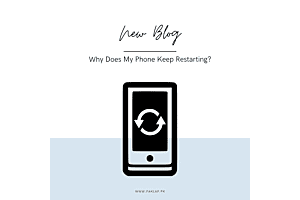Old Refrigerators V/S New refrigerators
A refrigerator consists of five main components which are a compressor, condenser, ventilation fins, expansion valve, and evaporator. A compressor uses electricity to convert low temperature and low-pressure gas into higher temperature and higher pressure gas. Then, this high-temperature gas is passed through the condenser, where it is turned into liquid by lowering its temperature and removing its heat. The ventilation fins transfer the heat removed to the back of the fridge and that’s why the back of the fridge feels warmer while the front does not.
In the expansion valve, the pressure of the liquid is lowered, making it expand and turn into vapor quickly and this process causes cooling. When this cold liquid absorbs the warmth of the air present in the refrigerator, it turns back into a low temperature and low-pressure gas which again goes into the compressor and this cycle continues.
But why do we actually need refrigerators? It is also used to keep food and beverages cool especially in hot areas where cold water is no less than a luxury. Fridges are very important to us now and according to an article published in 2015, in the International Journal of Refrigeration, 20% of energy consumption is done by refrigeration and air conditioning, worldwide.
In the 1720s, a Scottish doctor, William Cullen observed that evaporation has a cooling effect. It is when mechanical refrigeration was introduced. In 1748, to demonstrate his idea, he evaporated ethyl ether in a vacuum at the University of Glasgow. However, he didn’t use his discovery in practice. The first refrigeration machine that used vapor to cool, was designed by an American inventor, Oliver Evan, in 1805. In 1834, Jacob Perkins made the first machine built for practical refrigeration.
An American doctor, John Gorrie built a similar machine to Evan’s design, to make ice for cooling down yellow fever patients. Inventors around the globe continued to improve existing refrigeration techniques and tried to bring in new technology such as; a German scientist, Carl von Linde used methyl ether in 1873 to invent a portable compressor the refrigeration machine and then he switched to ammonia in 1876. Albert Einstein also played a part in the history of refrigerators as he patented one, which was environment friendly and didn’t use electricity.
In the 1950s came the peak of fridge designs. Those who had fridges were considered to be wealthy. Interior designing became popular and people would select that color of the fridge that would match their kitchen cabinets. In the 1960s, fridges were available in big sizes allowing people to store more food. The real technology came in the 1970s when the environment became the first priority and people focused more on energy-efficient appliances.In the 1980s, refrigerators were made safe for the environment by eliminating the use of CFCs in their manufacturing.
Refrigerators including French doors and stainless facades were released in the 1990s and from then people started choosing glamourous designs instead of the past bulky designed refrigerators. In the 2000s, more emphasis was given on improving designs and efficiency as in 2013, a typical refrigerator used about one half of the energy used by fridges of the same size in 1970. Today, refrigerators come in many different sizes and colors, the newest ones have a glass body and look amazing.
Refrigerators used gases such as chlorofluorocarbons (CFCs) and Halogens which deplete the ozone layer. Ozone layer is very important in our survival on Earth because it acts as a shield against the UV radiation of the sun which otherwise could cause skin cancer, harm plant life, reduce marine population and many more. The ozone layer also reflects back some of the sunlight falling on the ground, without it, the earth’s temperature would be much higher than what it is today. Also CFCs can persist in the environment for hundreds of years so it is crucial to stop using it from now to have a safe environment in the future. Many countries have even banned the use of CFCs.
Before the invention of refrigerators, people used to preserve food by various other methods. Those methods included the food to be; dried, salted, pickled, honeyed, smoked, and many more. Drying outworked because it draws out moisture from food which would otherwise allow rapid microbial growth of bacteria. Any sort of food can be dried. Wheat grains were dried in the sun or air and then stored at a dry place, fruits were sun-dried. Salting was practiced in areas that had large deposits of salt like in ancient Mesopotamia (Iraq), during the Akkadian Empire. However, when the meat was to be cooked, it was next to impossible to draw out all the salt away, no matter how much it was soaked in water and so people started making recipes, considering the saltiness of the meat.
In some areas of Europe which received snowfall, freezing food was a viable option. An underground room, present in castles or large houses, was used to keep food packed in winter ice. Before refrigerators, an icebox was also used to keep food cold. People used to make their own iceboxes by lining wooden boxes with zinc or lead and insulating material and used to fill it with snow or ice. An icebox had two portions; ice was kept in one portion and food in the other. They were in use until the 1930s. During the 17th century, some Europeans used to create ice by dissolving saltpeter in water.
Today, when everyone has a busy life, refrigerators have given us relief from worrying about preserving food. Imagine coming home tired, cooking food for yourself, and then implementing certain ways to preserve food. But that’s not the case. Instead after eating food, we just put it in the fridge and go to sleep. Not only this but imagine coming back home after playing, on a hot day and not getting to drink cold water.
It is high time we stop taking things for granted and start being grateful for everything.
Paklap.pk





